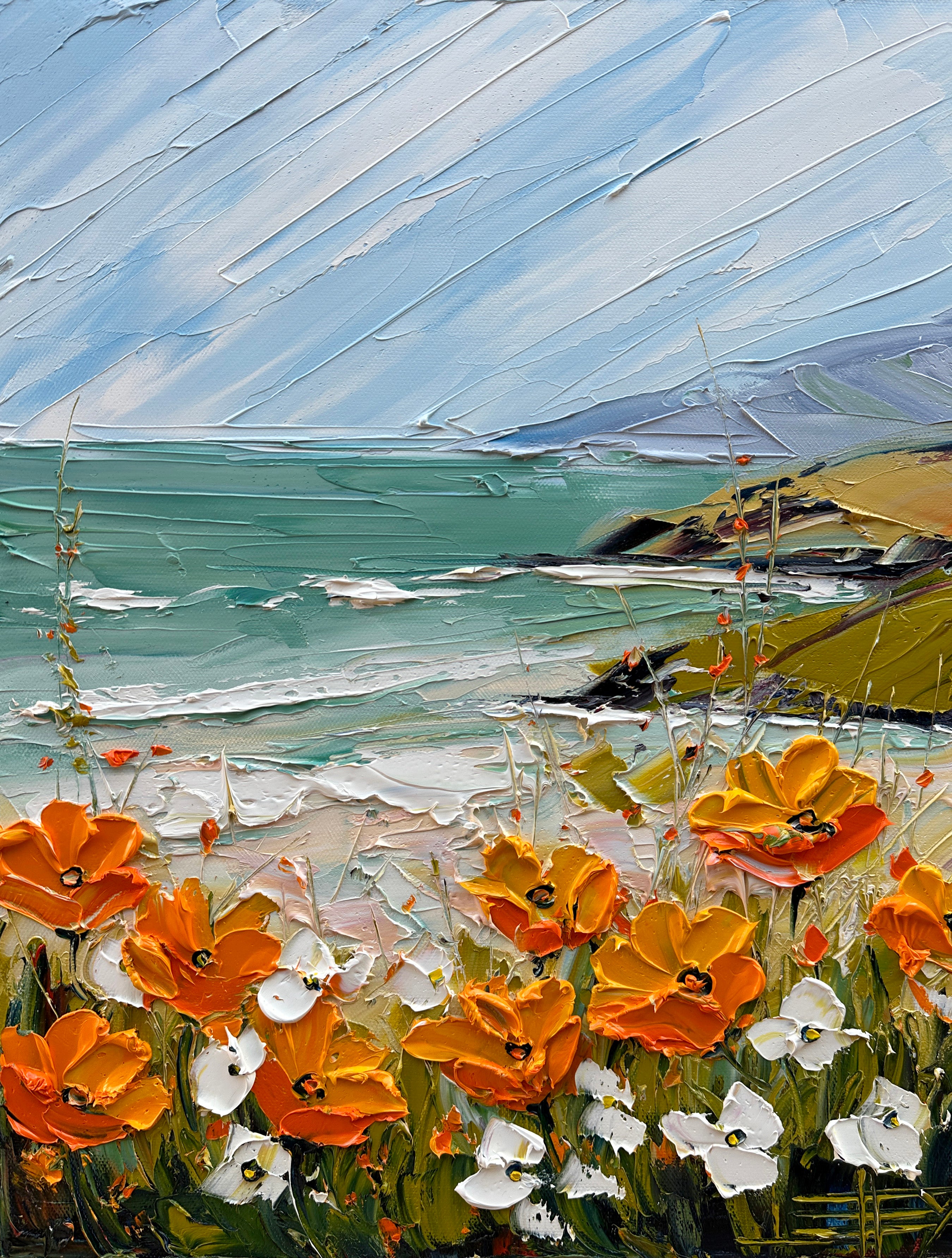Premium Canvas Oil Paintings for Sale Direct from Painters
Premium Canvas Oil Paintings for Sale Direct from Painters
Blog Article
Exploring All About Oil Paintings: An Overview to Recognizing Their Appeal and Value
Oil paints have actually mesmerized target markets for centuries, supplying a look into the imaginative mastery of different eras. Their rich history is intertwined with cutting-edge techniques and profound psychological expression. Understanding the materials and approaches behind these artworks can boost gratitude. Additionally, the marketplace for oil paints offers opportunities for enthusiasts and capitalists alike. As one explores this fascinating globe, the inquiry develops: what makes an oil painting genuinely beneficial?
The History of Oil Painting: A Trip Through Time
Oil paint has roots that date back to ancient times, it truly grew during the Renaissance, when musicians uncovered its flexibility and rich shade potential. Early instances can be traced to the 7th century, with methods evolving notably throughout cultures. The tool became noticeable in Northern Europe in the 15th century, especially via the works of musicians like Jan van Eyck, who originated its use for thorough realism and vivid hues. This period noted a departure from tempera paints, permitting better depth and structure. As oil paint spread, it affected numerous musicians, leading to masterpieces by distinguished numbers such as Leonardo da Vinci and Rembrandt. The medium's tradition continues, forming the art globe well right into modern times.
Comprehending Oil Repaints: Products and Techniques
As musicians explore the world of oil paints, they experience a diverse selection of materials and methods that specify this medium. The main parts of oil paint consist of pigments, which provide color, and drying oils, such as linseed, that bind the pigments and facilitate application. Different ingredients can modify the paint's texture and drying time, improving convenience. Strategies like glazing, where transparent layers are built up, and impasto, which involves applying thick paint, permit various visual effects. Furthermore, making use of brushes, combination blades, and also fingers can produce special appearances and finishes. Comprehending these methods and products allows artists to fully express their creative thinking and accomplish the preferred impact in their artwork.
The Duty of Shade in Oil Paintings
Color plays a pivotal role in oil paints, influencing both visual allure and psychological resonance. Recognizing shade theory essentials, including the relationships in between colors, can enhance a musician's capability to convey state of mind and environment. Additionally, understanding color blending strategies enables greater deepness and splendor in a paint's palette.

Shade Concept Basics
Comprehending shade concept is important for musicians functioning with oil paints, as it creates the structure for developing aesthetically engaging and unified structures. Shade theory encompasses the research of how shades engage, the color wheel, and the partnerships between primary, additional, and tertiary colors. Musicians utilize corresponding colors to boost contrasts and produce prime focus, while similar shades promote unity and cohesiveness within an item. Additionally, the principles of warm and awesome shades influence the perception of depth and area in a paint. Realizing these principles enables artists to adjust color effectively, assisting the viewer's eye and interacting their intended message. Mastery of shade concept ultimately enhances a musician's ability to communicate feelings and concepts with their job.
Psychological Effect of Shade
The psychological impact of color in oil paintings plays a crucial role in how visitors perceive and connect with art work. Shades evoke details feelings and state of minds, affecting the customer's mood. Cozy colors like reds and oranges can develop a feeling of heat and power, while amazing tones such as blues and greens commonly stimulate peace or introspection. Artists tactically choose color palettes to boost narrative elements, guiding the audience's psychological trip. The saturation and contrast of shades further enhance these effects, attracting attention and creating emphasis. Inevitably, the interaction of shades in oil paintings not only enhances their aesthetic allure yet additionally functions as an effective tool for psychological expression, improving the visitor's experience and analysis.
Shade Combining Techniques
While several facets of oil paint add to the general structure, grasping shade blending methods is vital for accomplishing desired results and deepness. Color blending can be come close to with various approaches, consisting of the subtractive and additive processes. Additive mixing entails integrating colors of light, while subtractive blending relies upon pigments, where shades mix to develop brand-new tones. Musicians frequently make use of a minimal scheme to produce harmonious jobs, comprehending the relationships in between primary, second, and tertiary colors. Strategies such as glazing and scumbling even more enhance deepness and brightness. By masterfully mixing shades, an artist can stimulate emotions, produce focal points, and attain a sense of realism, inevitably elevating the paint's emotional and visual effect.
Famous Oil Painters and Their Iconic Works

Famous for their proficiency of shade and strategy, oil painters have produced several of the most well known art work in background. Popular musicians like Vincent van Gogh astounded audiences with his emotive brushwork in "Starry Evening," while Claude Monet's "Impression, Daybreak" prepared for Impressionism. Leonardo da Vinci's "Mona Lisa" remains an enduring icon of imaginative genius, showcasing his skill in recording human expression. Rembrandt's "The Evening Watch" highlights his ingenious use of light and shadow. Other noteworthy figures include Pablo Picasso, that changed modern art with his vibrant trial and error in works like "Les Demoiselles d'Avignon," and Georgia O'Keeffe, whose dynamic depictions of landscapes and blossoms assisted define American modernism. Each artist's special design contributed greatly to the oil painting landscape.
Exactly how to Assess the Top Quality of an Oil Paint
Examining the high quality of an oil painting involves a mindful analysis of craftsmanship strategies, in addition to an evaluation of color and structure. Observing brushwork, layering, and the application of paint can expose the artist's skill level. Additionally, the interplay of colors and the total plan of elements add significantly to the paint's aesthetic value.
Evaluating Workmanship Techniques
A meticulous evaluation of craftsmanship techniques is crucial for figuring out the top quality of an oil paint. Evaluators must initially take a look at the application of paint; thick, textured brushstrokes may suggest a proficient hand, while extremely uniform applications can show a lack of deepness. oil paintings for sale. The layering strategy is likewise essential; the visibility of lusters and varied thickness can boost luminance and complexity. Additionally, the quality of the products utilized, such as the canvas and pigments, plays a significant role in toughness and general aesthetic. Focus to information in elements like edges and changes in between colors reflects the artist's dedication to their craft. Ultimately, these check here strategies contribute to the paint's emotional impact and market worth, offering as indicators of the artist's ability and intent
Assessing Color and Structure
While examining the top quality of an oil painting, one should concentrate on the interaction of shade and make-up, as these components are fundamental to the artwork's general effect. Shade selections can establish and stimulate emotions mood; therefore, the musician's scheme need to be analyzed for consistency and contrast. A healthy structure routes the visitor's eye and develops a sense of unity. Musicians usually use strategies like the rule of thirds or leading lines to boost visual passion. Additionally, making use of light and darkness can include depth, improving the three-dimensionality of the painting. Ultimately, an effective oil painting marries shade and structure, involving the viewer and welcoming a much deeper appreciation of the artist's vision and method.
Taking care of and Preserving Oil Paintings
Appropriate care and preservation of oil paints is essential for keeping their honesty and durability. To secure these artworks, it is crucial to show them away from straight sunlight, which can cause fading and staining. Preserving a steady environment with regulated temperature level and moisture additional help in avoiding damage. Cleaning should be done gently using a soft, completely dry towel, staying clear of any kind of extreme chemicals that might hurt the paint or varnish. Routine assessments for indicators of deterioration, such as cracking or flaking, are advisable. When saving or delivering oil paints, proper extra padding and framing are essential to prevent physical harm. Inevitably, thorough care adds to the aesthetic charm and worth of oil paints over time.
The Marketplace for Oil Paints: Investing and gathering
Recognizing the market characteristics for oil paintings is crucial for investors and collection agencies alike. The worth of these artworks is influenced by numerous factors, including the musician's track record, historical relevance, and present fads. Collection agencies frequently seek items that reverberate personally while considering prospective appreciation in worth. Galleries and auctions offer as primary locations for trading, with rates fluctuating based upon demand and rarity. Spending in oil paints calls for study right into the market, along with an understanding of credibility and provenance. Furthermore, emerging artists may supply chances for significant returns, while established names can regulate high costs. Overall, a calculated approach to collecting can generate both aesthetic satisfaction and financial benefits.

Frequently Asked Questions
What Are the Ecological Effects of Oil Paint Products?
The ecological effects of oil paint products include the launch of unstable organic substances (VOCs), damaging waste generation, and source extraction for pigments. These aspects add to air pollution and ecological deterioration, raising worries amongst environmentally mindful artists and consumers.
How Do Different Canvases Impact Oil Paint Results?
Various canvases affect oil paint results significantly. Surface area, structure, and absorbency top quality can change paint application, drying times, and shade vibrancy. Musicians often select details canvases to accomplish desired impacts and improve their creative expression.
Can Oil Paintings Be Restored if Damaged?
Oil paintings can undoubtedly be brought back if damaged. Professional conservators utilize various strategies to repair rips, tidy surface areas, and address staining, making certain that the artwork keeps its initial elegance and worth for future generations.
What Are the Indicators of an Initial Oil Paint?
The signs of an original oil painting consist of visible brush strokes, texture variants, and an uneven canvas weave (oil paintings for sale). In addition, credibility might be verified through provenance, trademarks, and the existence of a varnish layer unique to oil mediums
How Has Technology Influenced Modern Oil Painting Techniques?
Innovation has actually greatly affected modern-day oil paint techniques by introducing electronic devices for preparation, improved materials for texture and long life, and on the internet systems for offering and sharing art, consequently broadening artists' innovative possibilities and audience get to. Oil painting has roots that date back to ancient times, it genuinely flourished throughout the Renaissance, when musicians found its adaptability and rich shade potential. The psychological influence of color in oil paints plays a crucial duty in exactly how audiences connect and perceive with art work. While several elements of oil paint add to the overall composition, grasping shade blending strategies is essential for accomplishing wanted impacts and deepness. Assessing the high quality of an oil paint includes a mindful evaluation of workmanship techniques, as well as an analysis of color and composition. While reviewing the top quality of an oil painting, one should concentrate on the interplay of color and composition, as these elements are essential to the art work's general effect.
Report this page